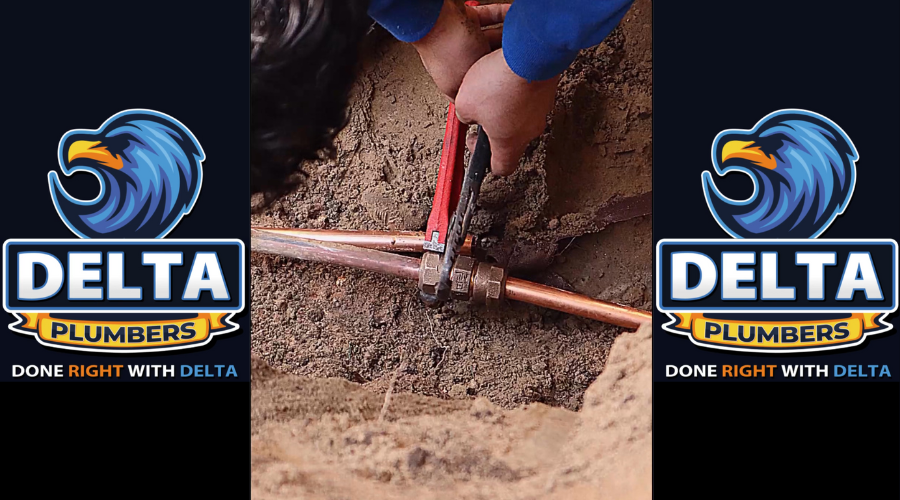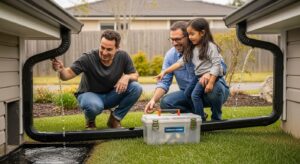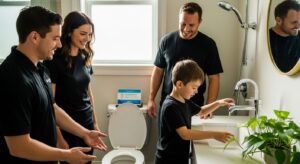DIY plumbing projects can be tempting for homeowners trying to save money. After all, the internet is full of tutorials that make it seem easy. But plumbing is a highly skilled trade — small errors can quickly escalate into costly repairs, water damage, mould problems, and even structural issues. Understanding the most common DIY plumbing mistakes can save you thousands of dollars and protect your home from hidden disasters. In this blog on common DIY plumbing mistakes that cost you more, Delta Plumbers shares insights into frequent errors, why they happen, and how to avoid them.
Whether you’re a DIY enthusiast or a homeowner trying to fix a “small issue,” knowing the risks can make all the difference between a successful repair and a plumbing catastrophe.

Picture Source – Delta Plumbers
Over-Tightening Plumbing Connections
Over-tightening fittings is probably one of the most overlooked DIY mistakes. Many homeowners believe that making fittings “extra tight” ensures a better seal. In reality, it creates the opposite effect.
Applying too much force can crack porcelain fixtures like toilets and sinks, warp flexible supply lines, or strip pipe threads, leading to leaks that may not show up until days or weeks later. You might not even realize a crack has formed until significant water damage has occurred behind your walls or under your flooring.
Real example: A customer once tightened their sink trap so much that it cracked subtly. Months later, they discovered warped cabinets and mold growth costing over $4000 to repair.
Tip: Tighten until fittings feel snug, and then give a slight quarter turn more. Specialized plumbing torque wrenches can help avoid over-tightening.
Also Read: Emergency Plumbing Repairs: What to Do Before the Plumber Arrives

Picture Source – Delta Plumbers
Using the Wrong Materials for the Job
Materials matter in plumbing. Using mismatched metals (like copper directly to galvanized steel) without special fittings causes galvanic corrosion — a slow process where one metal eats away at the other, leading to leaks and pipe failure.
Inexpensive plastic fittings often aren’t rated for high-pressure systems and can burst without warning. Similarly, using interior-grade PVC outside in cold climates leads to rapid cracking and system failure.
Real example: We replaced a full basement water line because a homeowner used non-pressure-rated PVC pipes — they burst during the first winter, flooding the entire lower floor.
Tip: Always match materials properly: copper with copper, PVC with PVC, and use the right adapters when transitioning materials. Buy materials rated for pressure and temperature conditions specific to the area you’re working in.
Also Read: Professional Drain Cleaning: Why It Is Essential

Picture Source – Delta Plumbers
Incorrect Use of Plumber’s Tape
Thread seal tape (Teflon tape) is essential when making threaded pipe connections. Yet a surprising number of DIYers wrap it backward or use too little.
Incorrectly wrapped or insufficient tape leaves tiny gaps that allow leaks. Worse, overusing tape can clog up pipe interiors, leading to hidden blockages over time.
Common error: Wrapping tape counterclockwise on the threads, causing the tape to unravel while tightening.
Tip: Always wrap the plumber’s tape clockwise, starting at the end of the pipe. Make 3–4 full wraps, covering the threads evenly without overlapping too much. Keep the tape away from the opening to avoid pieces breaking off into the water supply.
Also Read: Detect Hidden Plumbing Leaks Before They Cause Damage

Picture Source – Delta Plumbers
Poorly Soldering Copper Pipes
Soldering copper pipes isn’t as simple as heating and sticking things together. Successful soldering requires proper cleaning, good flux application, even heating, and correct solder flow.
Skipping any of these steps creates weak joints prone to leaking. Excess heating can burn away the flux, and poor cleaning can trap corrosion inside the joint, both leading to failure.
Real example: A homeowner soldered copper pipes without cleaning the oxidation off first. After six months, leaks appeared inside their finished basement walls, leading to $9000 worth of water and mould remediation work.
Tip: Always clean pipe surfaces with an emery cloth or a wire brush. Apply flux generously, heat the fitting (not the solder), and let the solder draw into the joint naturally.
Also Read: Spring Plumbing Issues and How to Prepare for Them

Picture Source – Delta Plumbers
Skipping Shut-Off Valve Installation
Shut-off valves allow localized control of the water supply for fixtures like sinks, toilets, dishwashers, and washing machines. Skipping them might seem like a time-saver, but it is a dangerous mistake.
Without a localized shut-off, a minor leak or repair could require shutting off water to the entire home. Worse, if a fitting bursts while you’re away, the damage spreads until you can access the main valve.
Real example: A client had no shut-off valve under their kitchen sink. A tiny leak under the sink went unnoticed for hours while they were out, flooding half the kitchen floor and damaging cabinetry.
Tip: Always install accessible shut-off valves for every fixture and major appliance. Test them twice a year to ensure they operate properly.
Also Read: Water Heater Repair vs. Replacement: How to Decide What’s Best for Your Home

Picture Source – Delta Plumbers
Misdiagnosing Plumbing Problems
DIYers often fix the symptom but not the root cause. A slow-draining sink might be caused by grease buildup close to the drain, or it could be a broken pipe farther down. Misdiagnosis leads to wasted time and money, and lets bigger problems fester.
Hidden risks: Clearing surface clogs without recognizing a cracked sewer line can lead to sewage backup into the home — a disaster that typically costs $7000–$20,000 to remediate.
Tip: If an issue keeps recurring (even after cleaning, plunging, or snaking), call a professional plumber. Video inspection tools reveal what’s happening inside your pipes without invasive guesswork.
Also Read: Trenchless Sewer Repair: The Future of Sewer Line Replacement Without Digging

Picture Source – Delta Plumbers
Ignoring Local Plumbing Codes
Plumbing codes exist for your safety. They ensure water supply cleanliness, prevent backflow contamination, and guarantee proper system function.
Common DIY code violations include:
- Inadequate venting of drain systems
- Incorrect pipe slope leading to frequent blockages
- Improper backflow prevention
- Using non-code-approved materials
Violating plumbing codes may not only cause functional issues, but it can also void homeowners’ insurance, create health hazards, and reduce property resale value.
Real example: A DIY bathroom remodel, we corrected a failed city inspection because the new shower drain lacked proper venting. It cost the homeowner an additional $4500 to fix the post-renovation.
Tip: Always research local codes before starting a plumbing project. When in doubt, get a professional consultation.
Also Read: How to Prevent Basement Flooding in Ontario This Spring

Picture Source – Delta Plumbers
Attempting Major Plumbing Work Without Permits
Even enthusiastic DIYers must respect one golden rule: major plumbing changes need permits. Major projects like moving water supply lines, replacing sewer pipes, or adding bathrooms must comply with local building regulations.
Unpermitted work can:
- Result in heavy fines
- Require tearing out finished walls for inspection access
- Cause insurance claims to be denied in case of damage
- Reduce your home’s resale value
Tip: Always verify with your municipality if a permit is needed before starting major plumbing work. Permits protect your investment and ensure the project meets health and safety standards.
Prevention Checklist: How to Avoid Expensive DIY Plumbing Mistakes
Before starting any DIY plumbing project:
- ✅ Research proper materials and methods
- ✅ Buy professional-grade parts and tools
- ✅ Double-check local plumbing codes
- ✅ Don’t skip shut-off valves
- ✅ Use plumber’s tape correctly
- ✅ Don’t over-tighten connections
- ✅ For complex projects, consult or hire a professional
- ✅ Obtain required permits for major work
Conclusion
DIY plumbing offers a sense of accomplishment and potential savings — but only if done right. Small mistakes like over-tightening, wrong materials, poor soldering, skipped valves, and code violations can end up costing thousands in repairs, water damage, or legal fines.
Before picking up that wrench, weigh the real risks versus rewards. Sometimes calling in a licensed professional like Delta Plumbers isn’t just safer — it’s cheaper in the long run.
If you’re facing a plumbing project — big or small — and want peace of mind, contact Delta Plumbers today. Our expert team is ready to help homeowners across Ontario with professional repairs, installations, and inspections done right the first time.









